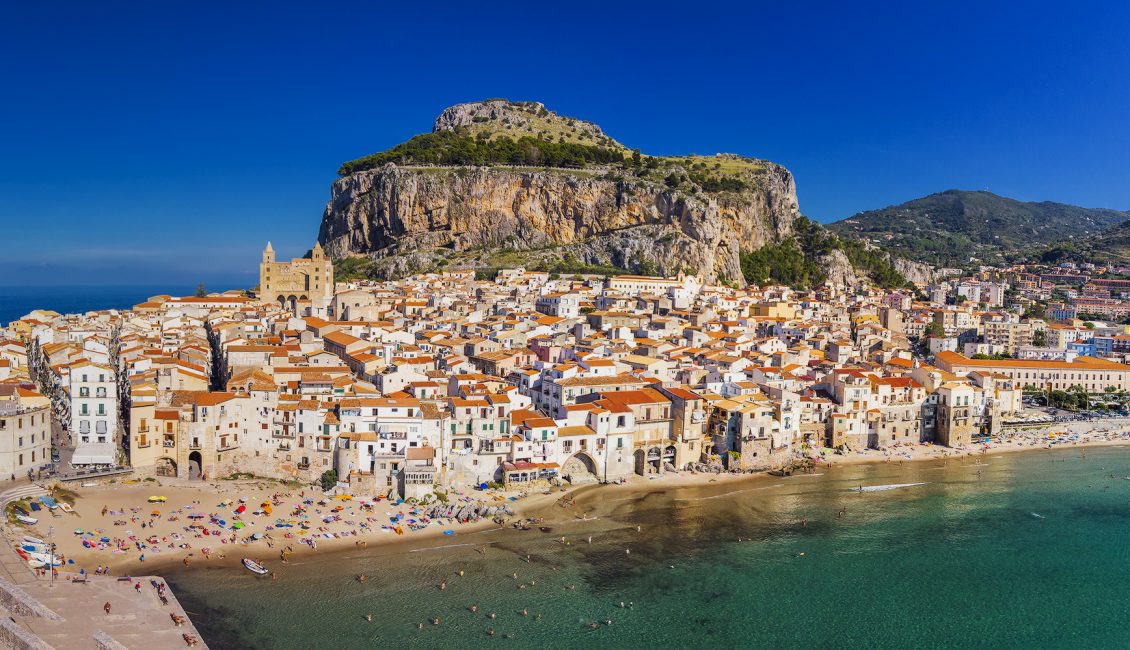
The Rock of Cefalù, silhouetted against a blue-green sea, is the undisputed symbol of this place. Protected from northerly winds, the town rises under the western slope of the promontory. Corso Ruggero, its main thoroughfare, divides it into two parts: one with stepped, winding alleys enclosed by the looming wall of the Rocca, and the other with straight streets leading to the beach.
The city was founded in the 5th century B.C., as evidenced by traces found in caves on the Kephaloidon cliff, as the Greeks called it. The remains of megalithic walls, on the Riviera near Giudecca Gate and at the foot of the Rock, as well as the so-called Temple of Diana, convey the fragmentary image of the settlement’s origin. Of its important political role in the Roman Mediterranean between the third century B.C. and the second century A.D., of its role in the Byzantine West until the ninth century, and of its even more important role as a stronghold of Islamism in Sicily, history tells us, but no consistent traces remain.
The Normans wrested it from the Arabs in 1064, destroyed its eastern guise and completely rebuilt it: it became the symbol of restored Christianity in the west of the island. From Porta di Terra, where Garibaldi Square is now, a straight axis was laid out leading straight to the sea, leaving a wide widening on the right where, beginning in 1131, the cathedral was built. In the 13th-14th centuries Cefalù was ruled by the Ventimiglias, who had the so-called Osterio Magno built. Between the 16th and 17th centuries, the design of the urban center was completed: the convents of the Dominicans, Observants and Carmelites filled the empty spaces; the perimeter of the cathedral square was defined by the facades of the Piraino Martino-Atanasio palaces; the ancient city walls were strengthened with the gates of access to the city; and the bastion of Cape Marchiafava was built. In the 18th century, as the local nobility built their palaces, the bishop’s palace was rebuilt in its present form. With the end of the feudal regime in the 19th century, a deep economic crisis began.
The urbanistic consequence was the abandonment by the decaying families of the buildings they inhabited or subsidized. A victim of 20th-century building speculation, Cefalù now presents itself with a disfiguring building offshoot on the plain west of the ancient center. The pedestrian itinerary starts from Piazza Garibaldi, where the ancient Porta di Terra, the entrance to the city for those coming from the consular Pompea road and from the hinterland, opened; from the same square an excursion to the Rocca can begin, from where there is a spectacular view.
FOR MORE INFORMATION: https://www.touringclub.it/destinazione/localita/citta/230069/cefalu







